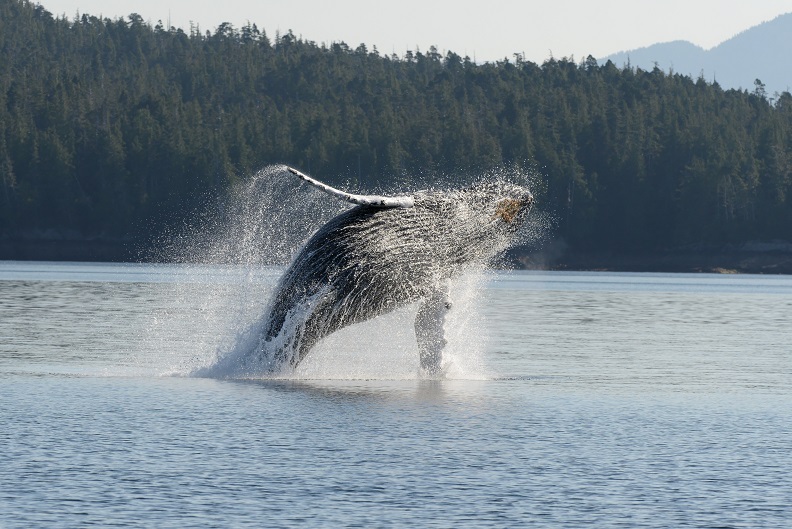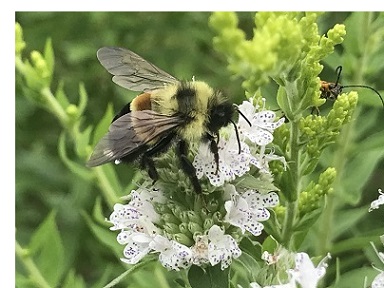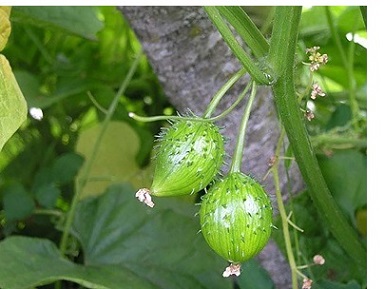How action – or inaction – can change species' fates
Printable version (PDF - 809 kB)
(Ottawa, December 7, 2022). As Canada welcomes the world to the COP15 Biodiversity Conference in Montreal, the latest biannual species assessments by the Committee on the Status of Endangered Wildlife in Canada (COSEWIC) show how decisions to act - or not to - can change biodiversity. Legal protection has improved the fate of some species, while declines in others were not even documented until the species had almost disappeared.

Whales are culturally important for Indigenous peoples, and beloved by all. North Pacific Humpback Whale exemplifies both conservation success and the need for continued vigilance. Commercial whaling for Humpbacks was outlawed globally in 1966. Since then, the dangerously low population of North Pacific Humpback Whale has been growing steadily. More than 4000 now spend their summers off the coast of British Columbia, although ship strikes, entanglement in fishing gear, noise disturbance and toxic spills all remain hazards.
Furthermore, according to John Ford, Co-chair of the Marine Mammals subcommittee, "Southeast Alaska, just north of the British Columbia coast, saw a troubling die-off of Humpbacks during 2014-2018, when a long period with abnormally warm water caused a scarcity of their food. Although Humpbacks are doing really well in British Columbia, they still face serious challenges." North Pacific Humpback Whale was assessed as Special Concern.

Once common, Rusty-patched Bumble Bee declined quickly in the 1990s and could not be found by the time it was designated Endangered in 2010. The initial decline – probably caused by disease spread through commercial greenhouse bumble bees – came as a surprise because few people were monitoring bees at the time. Now, Rusty-patched Bumble Bee is an ambassador for the “save-the-bees” movement, part of the huge expansion of community science nationwide. In spite of some 40 000 records of bumble bees across the species’ former range in the popular iNaturalist app, not a single Rusty-patched Bumble Bee has been reported in Canada since 2009. Though a few of these bees may remain, this massive, collective volunteer effort helped the committee to confirm that Rusty-patched Bumble Bee is Endangered.
The committee also reassessed Coastal Manroot, a vine with prickly, gourd-like fruit and enormous tubers that resemble sweet potatoes. An important Indigenous medicinal plant, many parts were used to soothe sores and treat diseases. However, threats from development and introduced plants have reduced the Canadian population to fewer than 50 individuals.

Gloria Goulet, Co-chair of COSEWIC’s Aboriginal Traditional Knowledge subcommittee explains: “We consider these plants our relatives, and so both harvesting and caretaking follow long-established ethical protocols. This way of looking at the plant world makes us pause and reminds us of our collective responsibility.” Coastal Manroot was reassessed as Endangered.
As the world considers global biodiversity issues at the COP15 meeting, Canada faces its own decisions to save species here at home. “More and more people are getting involved in looking for, and looking out for, species at risk,” concluded David Lee, Chair of COSEWIC, “That’s encouraging.”
COSEWIC assessed 27 wildlife species in total, from Eastern Whip-poor-will to Leatherback Sea Turtles to Scaly Fringe Lichen.
Next meeting
COSEWIC’s next scheduled wildlife species assessment meeting will be held in April 2023.
About COSEWIC
COSEWIC assesses the status of wild species, subspecies, varieties, or other important units of biological diversity, considered to be at risk in Canada. To do so, COSEWIC uses scientific, Aboriginal traditional and community knowledge provided by experts from governments, academia and other organizations. Summaries of assessments are currently available to the public on the COSEWIC website and will be submitted to the Federal Minister of the Environment and Climate Change in fall 2023 for listing consideration under the Species at Risk Act (SARA). At that time, the status reports and status appraisal summaries will be publicly available on the Species at Risk Public Registry.
At its most recent meeting, COSEWIC assessed 27 wildlife species in various COSEWIC risk categories, including 9 Endangered, 7 Threatened, 8 Special Concern, and 3 Extirpated (i.e. no longer found in the wild in Canada).
COSEWIC comprises members from each provincial and territorial government wildlife agency, four federal entities (Canadian Wildlife Service, Parks Canada Agency, Fisheries and Oceans Canada, and the Canadian Museum of Nature), four Non-government Science Members, Co-chairs of the Species Specialist and the Aboriginal Traditional Knowledge Subcommittees, and two early career scientists.
Definition of COSEWIC terms and status categories:
Wildlife Species: A species, subspecies, variety, or geographically or genetically distinct population of animal, plant or other organism, other than a bacterium or virus, that is wild by nature and is either native to Canada or has extended its range into Canada without human intervention and has been present in Canada for at least 50 years.
Extinct (X): A wildlife species that no longer exists.
Extirpated (XT): A wildlife species that no longer exists in the wild in Canada, but exists elsewhere.
Endangered (E): A wildlife species facing imminent extirpation or extinction.
Threatened (T): A wildlife species that is likely to become Endangered if nothing is done to reverse the factors leading to its extirpation or extinction.
Special Concern (SC): A wildlife species that may become Threatened or Endangered because of a combination of biological characteristics and identified threats.
Not at Risk (NAR): A wildlife species that has been evaluated and found to be not at risk of extinction given the current circumstances.
Data Deficient (DD): A category that applies when the available information is insufficient (a) to resolve a wildlife species’ eligibility for assessment or (b) to permit an assessment of the wildlife species’ risk of extinction.
Species at Risk: A wildlife species that has been assessed as Extirpated, Endangered, Threatened or Special Concern.
| Dr. David Lee Chair, COSEWIC Telephone: 514-366-9574 |
For general inquiries: COSEWIC Secretariat Canadian Wildlife Service Environment and Climate Change Canada 351 St. Joseph Blvd, 16th floor Gatineau QC K1A 0H3 www.cosewic.ca |
| For inquiries on amphibians and reptiles (Leatherback Sea Turtle): Dr. Tom Herman Acadia University Telephone: 902-670-3535 |
For inquiries on arthropods (American Burying Beetle, Bert's Predaceous Diving Beetle, Half-moon Hairstreak, Island Blue, Island Marble, Rusty-patched Bumble Bee): Dr. David McCorquodale Cape Breton University Telephone: 902-574-1547 |
| For inquiries on birds (Bicknell's Thrush, Eastern Whip-poor-will: Dr. Marcel Gahbauer National Wildlife Research Centre Telephone: 343-809-2757 |
For inquiries on freshwater fishes (Atlantic Whitefish, Cordilleran Sucker, Plains Sucker): Dr. Nicholas E. Mandrak University of Toronto Scarborough Telephone: 416-208-2248 |
| For inquiries on lichens (Scaly Fringe Lichen): Dr. David H. S. Richardson Saint Mary's University Telephone: 902-422-4979 |
For inquiries on marine mammals (Humpback Whale (North Pacific population), Northern Fur Seal): Dr. John K.B. Ford Scientist Emeritus Fisheries and Oceans Canada Telephone: 250-667-4698 |
| For inquiries on molluscs (Brook Floater, Magnum Mantleslug): Dr. Joseph Carney Lakehead University Telephone: 807-766-7223 |
For inquiries on mosses (Poor Pocket Moss): Dr. René Belland University of Alberta Telephone: 780-492-0801 |
| For inquiries on terrestrial mammals (Mountain Beaver): Dr. Chris Johnson University of Northern BC Telephone: 250-960-5357 |
For inquiries on vascular plants (Coastal Manroot, Foothill Sedge, Slender Mouse-ear-cress, Small-flowered Sand-verbena, Spring Blue-eyed Mary): Del Meidinger Meidinger Ecological Consultants Ltd. Telephone: 250-881-1180 |
| For inquiries on Aboriginal Traditional Knowledge: Gloria Goulet Telephone: 431-228-3064 |

